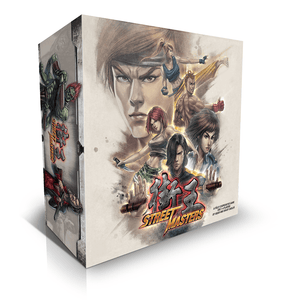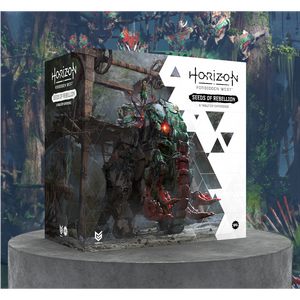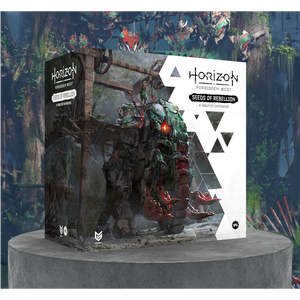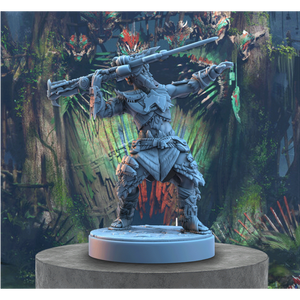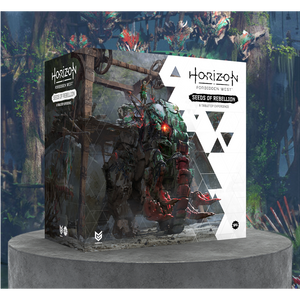Back for more, Shipmates?
Well then, sit on the log yonder and join me at the campfire, and we’ll discuss more of Sea of Thieves™: Voyage of Legends. So far we’ve talked about how we extract the core DNA from licensed games, so that we can accurately distil the essence of the experience and world, and then discussed how we approached bringing an open world pirate adventure to the tabletop as a 4XLite.
If you missed either article, not to worry—you can read them here.
Okay, back with me? Excellent. Now you’re caught up, today I wanted to look at turn structure in a little more detail, after broadly outlining the game flow and objectives last time out.
Let’s dive in!
Fleets Phase
As board game veterans might have expected, gameplay in Sea of Thieves™: Voyage of Legends is played across multiple rounds, during which each player will take a turn, ocean hazards (like skeleton ships and sea monsters) get a turn, and random events occur.
Once a round is over? Time to roll into the next one—the game continues until one player has gathered enough reputation to be declared a Pirate Legend and wins the game.
The first phase is what’s called the Fleets Phase, and this is where players take their turns. Unsurprisingly, it’s where the majority of the game takes place, and as a result each turn is broken up into several steps.
The first step is for the player to respawn their sunken ships, randomising an island for the wrecked ship to have washed up on, and then placing the repaired craft there. Wait—did I say ships, plural? And fleets for that matter?!
Yes, that’s correct. In Sea of Thieves™: Voyage of Legends, each player controls two craft. This allows them to be more active across the entire board, and adapt to the events and actions of other players more easily. It also helps players not have to store all of their booty in one place, should a rival or vengeful skeleton come to find it.
When a ship respawns, all of its defeated crew are revived (having had chance to recover) and any damage is discarded.
Let’s break from the turn order to look at an example ship card, to give a little context.

Here’s a humble sloop, the starting ship class for all players.
Beginning at the top and working down, we see the sail marking and colour in the top left corner, to identify which player it belongs to, and which ship it’s for.
Below that is the hold, where any resources and loot the ship encounters and (ahem) borrows is placed. There’s no limit to the amount of cargo a ship can hold which is both a blessing and a curse—no resource management woes, just the ever-present temptation for one last plunder before heading to the outpost... prolonging the danger of being attacked.
Looking to the right of the card, we see the water level of the ship. This indicates how much water it’s taken on from unrepaired damage. If it ever reaches the top the ship sinks, so managing this is crucial, especially when you see that a small craft like a sloop can’t take on too much water in the first place.
Below that, we see the crew slots, which indicates how many crew tokens the craft begins with. This can’t be increased without upgrading the craft to a larger class, although you can replace those crew with special crew tokens, should you hire them (more on both in a later article).
Finally, there’s a reputation value for each ship—this is how much it adds to the player’s score. Marginal for the sloop, obviously, but more by the time you get to a mighty galleon!
Now we’ve seen a ship, let’s move on to the next step.
(For those designers out there, this is where we spent our complexity points!)
Ship Actions
During this step, a player can perform up to three actions with their fleet, but each ship can only perform two actions at maximum, so there’s a degree of forward planning to be had.
Actions are pretty much what you’d expect—sailing on the wind or opening fire at nearby enemies if you’re at sea; if you’re at an island, plundering any resources or treasure to be found (and fighting any skeletons protecting it…); or if you’re at the outpost, trading.
I’ll come to the latter in a moment, because before I do, I wanted to talk about the crew on your ships.
Before taking each action, a ship’s crew are each able to do a smaller, less involved task of their own. There are four tasks, which are shown on the table below.

As you can see, these are essential not only in order for the ship to function if it’s suffered damage or taken on water, but also its efficiency when the crew aren’t urgently nailing planks to the hull or getting busy bailing water. Here’s a hint… the larger the ship, the more crew it has. This means it will be faster and far more resilient just from tasks alone—and that’s before you consider the tougher hull, and the fact that the number of crew influence how good it is at fighting and gathering resources during your main actions.
I’ll cover combat and resource gathering in a later article, as they’re big enough subjects to drown this one out on their own. For now, let’s briefly talk about trading.
As I mentioned earlier, at the centre of the Sea of Thieves™: Voyage of Legends board is an outpost island, where players can head to either spend their precious gold, or earn it in the first place by trading in resources and completing commissions for one of the trading companies.
Gold can be spent to fully repair a ship without needing resources, and lower the water level in doing so. After doing so, or if everything is already shipshape and Bristol-fashion, a ship can also be upgraded to the next class, providing the player has enough booty to foot the bill.
The outpost isn’t just home to merchants and shipwrights though; a menagerie of other characters roam the island or watch new arrivals, each ready to sign up and join a crew… for the right price, that is. These celebrities each bring special rules, helping players to customise their fleet to perform how they’d like.
Again, I’ll talk about both in more detail during a future update but for now it’s important to remember that upgraded ships aren’t just better during player turns—they’re also worth more reputation too, and get the player closer to declaring themselves a Pirate Legend.
Rising Waters
The final two steps of a players turn, after they’ve spent all of their actions, are quite a lot shorter and are more administrative, tidying the game board for the next player.
The first has a sinister name though—Rising Waters.
It’s now when damage on a player’s ships will really take effect, causing the water level to rise. If a ship’s water level reaches the highest point it will sink and get removed from the game board, leaving behind any cargo it had floating on the tide. Whatever you do, try to repair as best you can before you get here!
After resolving this, play moves to the next player. Once each player has taken a turn, play then proceeds to the next phase—the Ocean Hazards Phase. That’s when the enemies get their own turn to cause mischief.
But, for now, I think I’ve given you plenty to mull over, shipmates.
I’ll be back this time next week with the next article, where I’ll detail not only about how enemies work, but also combat and how to fight them.
Until next time!
Come and chat with Sherwin and the rest of the SFG team in the comments below, and on the SFG Discord servers here.

 Join us on Discord
Join us on Discord


